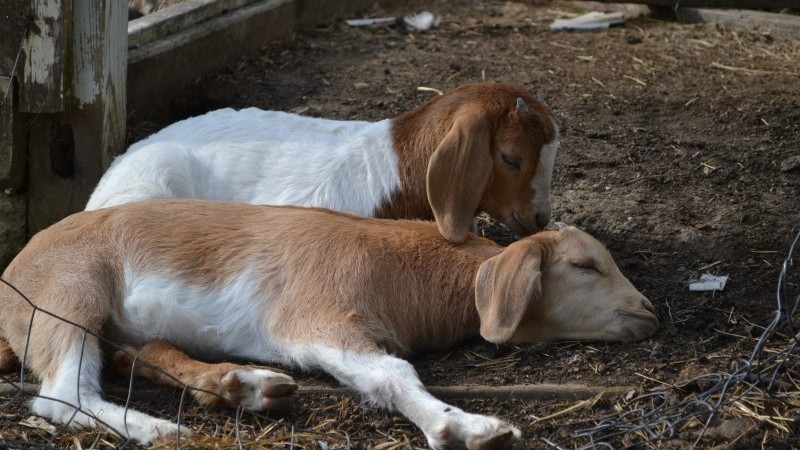

Goats are well known for their strength and resilience to diseases. However, this does not necessarily mean that they are never affected. There are about 10 common diseases in goats in Uganda.
These diseases can vary from simple skin ailments, diarrhoea to severe conditions causing, loss of weight, abortion and death.
Common infections include
Scours. This is more common in young goats and dirty pens.It can be caused by bacteria, coccidia, worms or even viruses. Its signs are loss of appetite, diarrhoea (yellow to red discoloration), pasting of faeces under and around the tail, loss of weight and high temperature. Farmers should use drugs that reverse diarrhoea, fluids and electrolytes to stop water loss and antibiotics for five to seven days or anti-coccidial drugs depending on the findings of the Veterinary doctor. Good hygiene is the only measure to prevent the condition.
Over-eating disease: It is caused by clostridial bacteria. The organisms take advantage of sudden changes in quantity and quality of feeds to flourish. It rapidly multiplies in the body producing toxins. The toxins damage the body which leads to high temperature, loss of appetite, depression and diarrhoea. The affected goats are eventually unable to stand and can lie on the side making paddling motions. The condition worsens with severe dehydration, convulsion and death.
Pregnancy toxaemia: It is more common in pregnant mother goats, especially during late pregnancy. It arises from deprivation of nutrients. Clinical signs include; depression, loss of appetite, feet swelling, laziness and sometimes sweet smelling breath. Management involves use of a combination of medicines containing glycol, plus sodium bi-carbonate and water which is done twice a day for a week.
Pneumonia: This is a respiratory problem and the affected animal is usually depressed, has a running nose, loses appetite, high temperature, coughs and has difficulty in breathing. Treatment is done through giving of antibiotics such as Oxytetracycline plus multivitamins.
Bloat: It is common in goats that have sudden access to unlimited fresh or grainy feed. It is characterised by build-up of gas in the rumen leading to an inflated abdomen. It can lead to sudden collapse and death if not handled quickly. The problem can be fixed by use of vegetable oil or any other edible oil. Soapy water (not rom powder detergents) can be useful too. Walking the goat around and massage to the flanks can be helpful.
Mange: This is a typically a skin infection of several different types of mites. It can be seen on ears, legs, head, and other skin parts. The affected goat gets itchy sensations on the skin and will be seen scratching, swelling, with eventual loss of hair on affected part and scabby wounds. The infection can be treated with skin ointments containing anti mite agents or by injections with Ivermectin or related drugs. Spraying goats with acaricides regularly can help to reduce mite infestations.
Ring worms: It is also a skin infection arising from fungal organisms. These invade the hair follicles and oil glands of the skin. Common signs seen include; small lumps in skin that may be maybe cyst like or like a bag of fluid. There is hair loss as well.
Worms infestation: Goats can be devastated by worms that are found in lungs, liver and intestines. They live as parasites inside the body organs affected because they suck blood and other nutritious items in the body. This can lead to swelling of lower face and gums, endless coughing, diarrhoea, anemia, and weight loss.
Sore Mouth: Goats with this condition are seen to have pimples around the mouth, udder, eyes, anus and hooves. The pimples may worsen into watery blisters that bust to form crusty wounds and eventually sores.
Affected animal can barely eat and may die. Infected goats should be isolated and the wounds treated with antibiotics or healing oil.
 Contact Jaguza Support
Contact Jaguza Support